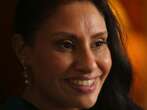Hello and welcome to Modern CEO! I’m Stephanie Mehta, CEO and chief content officer of Mansueto Ventures. Each week this newsletter explores inclusive approaches to leadership drawn from conversations with executives and entrepreneurs, and from the pages of Inc. and Fast Company. If you received this newsletter from a friend, you can sign up to get it yourself every Monday morning.
Dean Kamen created the Segway, and he is listed as an inventor on more than 1,000 international and U.S. patents, many of them for medical devices such as the first portable insulin pump. He is also president of the research and engineering firm DEKA Research and Development, which has helped transform its home city of Manchester, New Hampshire, from a struggling mill town to a tech hub.
But Kamen’s most enduring contribution to business and society might be FIRST (For Inspiration and Recognition of Science and Technology), a nonprofit robotics program that has worked with more than three million students globally, ranging from pre-K children to high school seniors, since he founded the organization in 1989. (Disclosure: FIRST is a Fast Company advertiser; this newsletter content was created independent of that partnership.)
FIRST to celebrate STEM
Kamen launched FIRST to encourage young people to engage with science and tech. In the mid-1980s, politicians and corporate leaders felt America was losing its economic competitiveness and blamed schools for science and math scores that lagged behind those of students in rival countries such as Japan and Korea.
Kamen, whose mother was a teacher, felt the problem wasn’t the schools or the quality of education, but a culture that didn’t celebrate scientific achievement and careers. “All the role models that kids were seeing were [in] the NBA, the NFL. They knew about the Super Bowl and the World Series,” Kamen says. “This country was still great at creating the entertainment for the world, but our ability to create enough scientists and engineers to keep us in the forefront was in trouble.”
Inspired by the excitement and competitive spirit of sports, FIRST uses teams and tournaments to teach and coach students on the fundamentals of engineering, research, coding, and more. Kamen says FIRST gives students problem-solving and collaboration skills that will hold them in good stead in the workplace, regardless of whether they pursue careers in science, tech, engineering, or mathematics. “We are creating a generation of kids that know how to communicate, cooperate, work hard, and deal with frustration,” he says.
And while FIRST motivates students with trophies and awards, Kamen says the program emphasizes sportsmanship, or what he calls “gracious professionalism.”
He says in competitions, students will often help opposing teams repair broken robots, even if it costs them points. At the FIRST Championship, the international contest that caps the program’s robotics competition season, “only one or two robots will win, but all the kids have to win,” he says. Indeed, the most prestigious award at the championship goes to the crew that is deemed the best role model for other teams and embodies the mission of the program.
A new era of role models
Idolatry of sports figures may have spurred the creation of FIRST, but a new group of role models has emerged to rival the popularity of professional athletes. Some 57% of Gen Z respondents to a recent Morning Consult poll say they want to be influencers, or paid content creators. Kamen is enthusiastic about the role people such as YouTuber Mark Rober can play in advancing FIRST’s mission.
“One of the things that technology is doing is lowering the barrier for people to be able to use it, understand it,” he says. Rober, a former NASA engineer with about 58 million subscribers to his YouTube channel, has hosted a FIRST robotics team at his company, attended the FIRST championship earlier this year, and posted a video praising the program. “I think the intersection of these influencers, creators, and a scalable version of FIRST . . . is starting to have a very significant impact on the future of the pipeline for technology in this country,” Kamen says, noting that the program is in tens of thousands of schools with hundreds of thousands of educators and volunteers.
Businesses have much to gain when students get excited about science. Independent research has found that after-school STEM programs improve students’ attendance and interest in college. A recent RAND survey found that educators would like to offer more extracurricular STEM programming, but many schools, especially in rural or urban districts, lack funding and partners to meet student demand.
Kamen thinks CEOs can help bridge the gap at these schools. “Ask them to look at their marketing budgets. How much money did they put into the Olympics? How many ads did they put on [during] the Super Bowl and the World Series? You get the best of what you celebrate,” he says. “I tell these CEOs to . . . make sure that schools in your community have FIRST teams, just like they have football and basketball teams—and let your technical people be out there in front of the kids, showing them how exciting their careers really are.”
Are you building the future workforce?
How does your company inspire students to pursue careers in your field? Did you participate in an after-school program or activity that taught you “gracious professionalism”? Share your experiences here—I’d love to compile a list of readers’ favorite programs for a future edition of this newsletter.
Read more:
- How Mark Rober became the Willy Wonka of engineering
- OK Go is helping kids make art in outer space
- Your next recruitment strategy should consider Gen Alpha







No comments